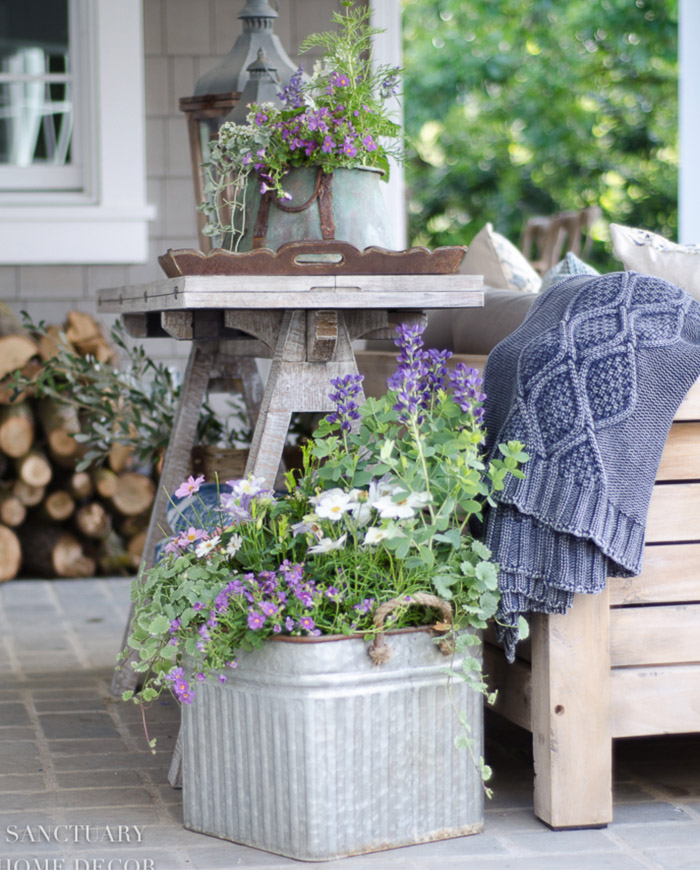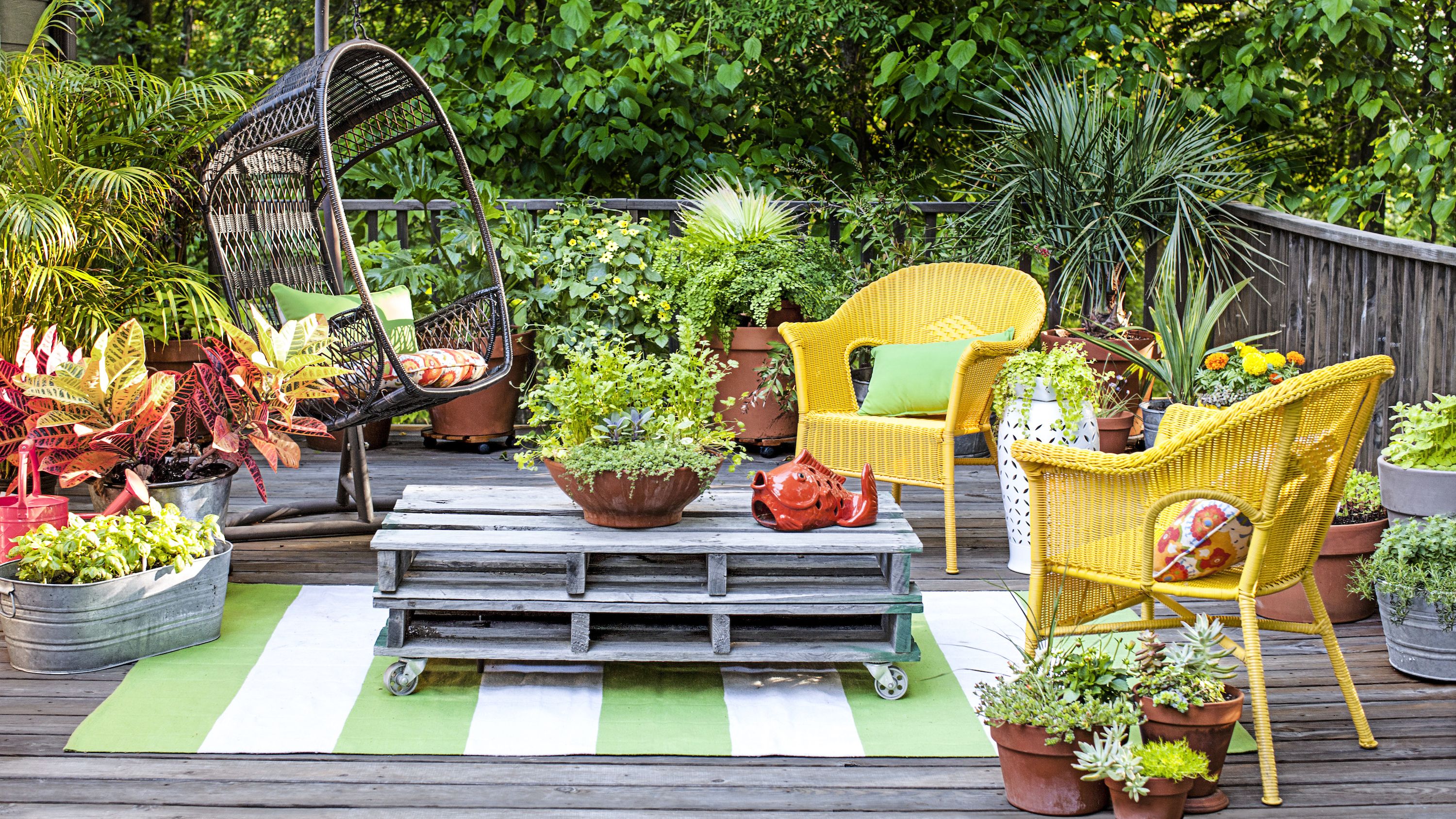As someone who has spent countless weekends nurturing plants and arranging a garden, I can genuinely say that decorative garden containers are essential to creating an inviting outdoor space. They not only offer a functional purpose but also add unique style and charm to your garden. In this comprehensive guide, we’ll explore the world of decorative garden containers, covering various styles, materials, and tips for selecting the best ones for your needs.
What Are Decorative Garden Containers?
Decorative garden containers, often known as plant pots or planters, are vessels that hold soil and plants for gardening. They come in various shapes, sizes, and materials, making them a versatile addition to any garden or patio. Whether you’re looking to create a cozy corner with flowering plants or showcase your herbs in a stylish way, the right container can make all the difference.
Why Use Decorative Garden Containers?
Using decorative garden containers offers several benefits, including:
- Enhanced Aesthetics: They beautify your space, providing a focal point and complementing your existing garden design.
- Versatility: You can move them around easily to suit seasonal changes or personal preferences.
- Improved Drainage: Most decorative containers are designed with drainage holes, preventing root rot.
- Space-Saving: Ideal for small areas, balconies, or patios where ground planting isn’t possible.
Types of Decorative Garden Containers
Let’s delve into the various types of decorative garden containers available, each offering a unique flair.
1. Ceramic Pots
Ceramic pots are a classic choice that adds elegance to any garden. They come in various colors, finishes, and sizes.

| Pros | Cons |
|---|---|
| Attractive designs | Can be heavy and breakable |
| Retains moisture | Generally more expensive |
2. Terracotta Pots
Terracotta containers have a rustic appeal and allow for excellent breathability, making them a favorite among gardeners.

| Pros | Cons |
|---|---|
| Good drainage | Can dry out quickly |
| Classic look | May crack in freezing temperatures |
3. Metal Containers
Metal planters, such as galvanized steel or iron, add a modern touch to gardens, especially in industrial-themed decor.

| Pros | Cons |
|---|---|
| Durable and long-lasting | Can heat up quickly in the sun |
| Unique aesthetic | May rust over time |
4. Plastic Planters
Plastic pots are lightweight and available in a wide variety of colors and styles, making them a practical choice for many gardeners.

| Pros | Cons |
|---|---|
| Lightweight and easy to move | Less aesthetically pleasing |
| Inexpensive | Can fade in sunlight |
5. Hanging Baskets
Hanging baskets are perfect for adding vertical interest and maximizing space, particularly in smaller gardens or balconies.

| Pros | Cons |
|---|---|
| Space-efficient | Requires more frequent watering |
| Adds visual height | Can be difficult to access for care |
Choosing the Right Decorative Garden Containers
When selecting decorative garden containers, consider the following factors:

1. Plant Type
Different plants have varying space and growth requirements. Ensure the container is suitable for the plant’s root system.
2. Size and Scale
Select containers that are proportionate to your garden space. A large pot in a small area can overwhelm the design, while tiny pots may get lost in a spacious garden.
3. Material Consideration
Choose materials based on your climate. For instance, terracotta may not be ideal in freezing conditions, while metal could heat up too much in direct sunlight.
4. Drainage
Proper drainage is crucial to keep your plants healthy. Ensure containers have drainage holes or add your own if necessary.
Decorative Garden Container Ideas
Here are some creative ideas to use decorative garden containers effectively:
1. Colorful Arrangements
Mix and match different colored pots to create a vibrant display that draws the eye. Consider using complementary colors to enhance the visual appeal.
2. Vertical Gardens
Use wall-mounted containers filled with trailing plants to create a stunning vertical garden that adds greenery without occupying ground space.
3. Themed Displays
Create themed sections in your garden by grouping containers according to colors, plant types, or styles—like a tropical corner with palm plants in wicker containers.
4. Seasonal Swaps
Change plants with the seasons to keep your garden looking fresh. Use containers to house seasonal blooms, herbs, or foliage that reflect the time of year.
Maintaining Decorative Garden Containers
To keep your garden containers looking their best, follow these maintenance tips:
1. Regular Cleaning
Remove any dust or debris from pots to prevent pests and diseases. A gentle rinse with water is often enough.
2. Monitor Plant Health
Look for signs of overwatering or nutrient deficiencies in your plants. Adjust watering and feeding schedules accordingly.
3. Seasonal Care
Protect containers from extreme weather. Bring plants indoors during harsh winters or cover them during storms.
Comparing Decorative Garden Containers
Here’s a quick comparison table to help you choose among the different styles of decorative garden containers:
| Type | Best For | Price Range | Lifespan |
|---|---|---|---|
| Ceramic | Elegance and moisture retention | $$$ | 5-10 years |
| Terracotta | Classical look and drainage | $$ | 3-5 years |
| Metal | Modern aesthetics | $$$ | 10+ years |
| Plastic | Affordability and lightweight | $ | 1-3 years |
| Hanging Baskets | Vertical gardens | $$ | 2-4 years |
FAQs about Decorative Garden Containers
1. What materials are best for outdoor decorative containers?
Durable materials like ceramic, terracotta, and metal are ideal for outdoor use, as they withstand varying weather conditions. Plastic can also be used but may not be as aesthetically pleasing.
2. How do I prevent my decorative containers from cracking in winter?
To prevent cracking, choose frost-resistant materials or bring containers indoors during extremely cold weather. Another option is to use insulating wraps for added protection.
3. Can I use decorative containers for vegetables?
Absolutely! Many gardeners successfully grow vegetables like tomatoes and peppers in decorative containers. Just ensure the pot is large enough and has proper drainage.
4. How often should I water plants in decorative containers?
Watering frequency depends on the plant type and climate; however, in general, check the soil moisture regularly. If the top inch of soil is dry, it’s time to water.
5. Are decorative containers suitable for indoor plants?
Yes! Decorative containers can be used indoors. Just ensure that they have proper drainage and are placed in an area where they can receive the right amount of light.
Conclusion
Decorative garden containers are not only functional but also inspire creativity in any garden space. By choosing the right type, understanding the care and maintenance, and exploring various styles and arrangements, you can elevate your gardening experience. Remember, your garden is an extension of yourself—let your decorative containers reflect your personality and style!